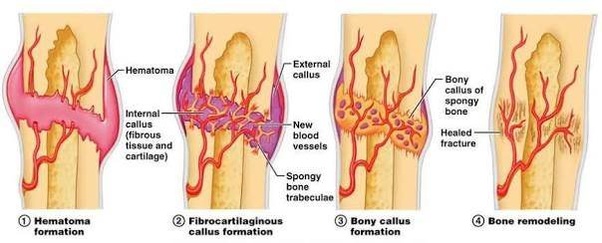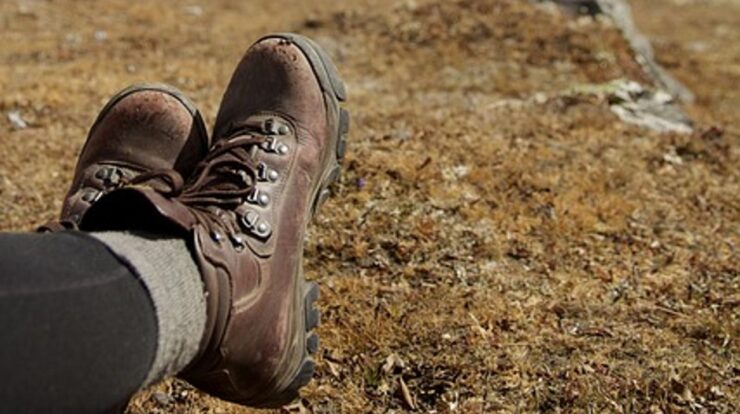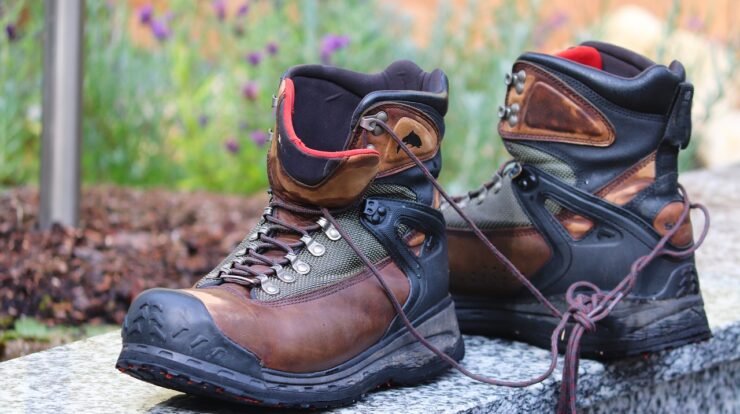
Imagine taking a walk on a wet summer’s evening, on holiday from work, gazing at the sunset, then slipped and find yourself on your bottom, severely twisting your ankle as you fell over. This happened to a friend and he asked the question, how do broken bones heal?
Since I am such an awesome friend, I got curious myself and wondered “how do broken bones heal” but instead of leaving the question there I decided to do some minor research and this is what I found out.
All broken bones go through a similar healing process that may take weeks to months. It does not matter if the injury is self-inflicted or as a result of a surgical procedure.
In short, the general process is, in the first couple days post fracture, the body generate a blood clot around the broken bone to protect it and bring the cells needed for the healing process to begin.
Callus it then formed around the broken area of the bone. This callus joins the pieces of the bone together. The callus is soft at first and gets harder and stronger over the following weeks forming new bones. This process takes weeks, if not, months to heal fully.
The 3 phases and 5 stages of bone healing

The healing process goes through three major phases and 5 stages of healing. The three major phases of fracture healing are reaction, repair and remodeling.
The reaction and repair phases consist of two stages each when the remodeling has the final one stage of the healing process. I will go through each phase one at a time. Stick with me as we venture into each phase.
Reaction
- Inflammation
- Granulation tissue formation
Repair
- Cartilage callus formation
- Lamellar bone deposition
Remodeling
- Remodelling to original bone contour
Reaction
This phase starts as of the moment the injury occurs. After bone fracture, blood cells accumulate adjacent to the site of the break. This is because bones have a blood supply and breaking it causes trauma to the injured area releasing the blood the was constrained by the veins and arteries in the area.
This triggers inflammation – the gathering of blood in the area. The inflammation squeezes against nerve endings which leads to great discomfort. This is the reason when you feel pain in the area, the body is just telling you to take a break.
The resulting blood vessels stop further bleeding and forms a blood clot called hematoma that acts as a template for callus formation.
The inflammation peaks by 24 hours and completes by seven days. All cells within the blood clot degenerate and die within 7-14 days and form a loose aggregate of cells, interspersed with small blood vessels, known as granulation tissue.
Repair
Seven to nine days after fracture, the cells that form the connective tissue membrane (periosteum) covering the bone replicate and transform into soft callus bone which is strong enough to prevent further injury.
A type of white blood cell known as an osteoblast begins its work to bridge the gap between the two pieces of bone.
The soft callus slowly fills the gap between the bones over the next few weeks returning some strength to the bone and further stabilizing the area. This ‘soft callus’ is then replaced by harder callus which becomes mineralized and forms bone.
At the end of this phase, the traditional 6 weeks is up and there is enough strength in the bone for you to return to basic activity.
Remodelling
Remodeling, the final phase of bone healing, begins as early as three to four weeks after fracture and may take 3 to 5 years to fully complete. Healing times depend on the injury site, your age, your habits, your compliance with non-weight bearing and your general fitness before the injury occurred.
In this phase the bone continues to form and become compact, returning to its original shape. Once adequate bone healing has occurred, weight bearing is encouraged.
What Helps Promote Bone Healing?
Proper diet and nutritional supplements are essential to bone growth. Stop Smoking and control your blood sugar levels (if living with diabetes). Smoking and high glucose levels interfere with bone healing.
Immobilization of the fractured bones is critical because any movement of bone fragments slows down the initial healing process. Severe fractures may require some form of fixation (such as screws, plates or wires) on the fractured bone and/or a cast to keep the bone from moving.
Weightbearing is also restricted. Once the bone is adequately healed, physical therapy may be needed to restore proper movement in the foot. An exercise program designed for you can help in regaining strength and balance and can assist in returning to normal activities.
What Can Hinder Bone Healing?
Avoid these if you want to improve bone healing and not hinder you own progress:
Avoid weight bearing too soon because it may cause bone movement and slow the healing process.
Avoid Smoking, which constricts the blood vessels and decreases circulation
Avoid poor blood glucose control.
Avoid Poor nutrition – good food is needed to improve the healing process
Avoid Low levels of calcium and vitamin D – get some sun and eat food rich in calcium.
How long does a bone take to heal?
Bone generally takes six to 12 weeks to heal to a significant degree. In general, children’s bones heal faster than those of adults. The length of time taken will depend on the location and severity of the fracture, the type of surgical procedure performed but the doctor will tell you how long it will take.
Final thought on how do broken bones heal
Your body is an amazing piece of engineering and can heal your injury while you rest and wait. You just have to follow your doctor’s orders, eat properly, have plenty of rest and just watch your bones heal sufficiently, for most people, within 6 to eight weeks’ time.






